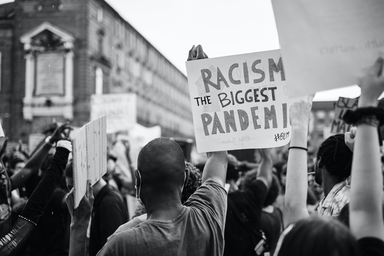Doctors take an oath to treat all patients equally regardless of the race, sexual orientation, religious or political beliefs, but they don’t always act upon this oath. Many doctors and other healthcare workers may not be racist themselves, but work in an inherently racist system and in a society that perpetuates certain stereotypes that we become oblivious to. Most doctors are not culturally competent enough to treat patients of different backgrounds. Medical schools and residency programs focus on treating patients like a set of symptoms and not like they are real people. Cultural sensitivity is neglected and leads to inequality inside and outside the healthcare field. Insensitivity and intolerance is the underlying condition we ignore, and can lead to death. The medical field is eurocentric and doesn’t take into account the cultural factors that lead to disease. Doctors are taught how to treat white patients, but white patients and minority patients do not experience health issues the same way. Some ethnic groups are more susceptible to certain diseases, have certain genetic precursors, and different healing methods.
Medical racism is not just about being unequally treated by providers but also about unequal access to quality healthcare, education, food, livable wages and housing. All of these things affect your health and your likelihood of seeking or being able to seek medical care. They also contribute to the likelihood of disease. Implicit bias is a big cause of the racism patients receive from providers. These biases are subconscious, but when we do realize we have them, we forget to rid ourselves of these biases. Some chose not to acknowledge the negative impact their biases have. This also goes beyond diagnosing and treating patients, and involves the way providers interact with patients. Patients of certain religious backgrounds may want to reject certain methods of treatment, and it’s important that doctors respect that and not let it affect the way they view their patient. Some prefer to only see providers of the same gender, and not to be touched by the opposite gender unless absolutely necessary. Some cultures emphasize natural forms of medicine. About 25 million Americans don’t speak english as a first language, but we have a lack of medical interpreters. This causes a big disconnect between providers and patients.
The statistics on racism in healthcare are overwhelming. Black women are far less likely to get breast cancer than white women, but are 40% more likely to die from it, and they are three to four times more likely to die from pregnancy-related issues than white women. Since the COVID-19 pandemic, Asian Americans are the most likely minority group to report experiencing racism, as a doctor or as a patient. The pandemic has also affected communities unequally. Black Americans have been dying from COVID at a right 2.4 times higher than White Americans. People of color are more likely to be infected, and more likely to die. This is due to unequal access to PPE, prevention information, and access to medical treatment.
In order to tackle the issue of racism in the medical field, we must restructure the entire system. Medical schools, nursing programs, hospitals, professional societies, all need to tackle medical racism. Teach providers cultural competency and sensitivity, improve access to health insurance and medical treatment, and access to information. We must address racism on a societal level and acknowledge subconscious bias. The effect of racism is well known, but progress and change will take time.


